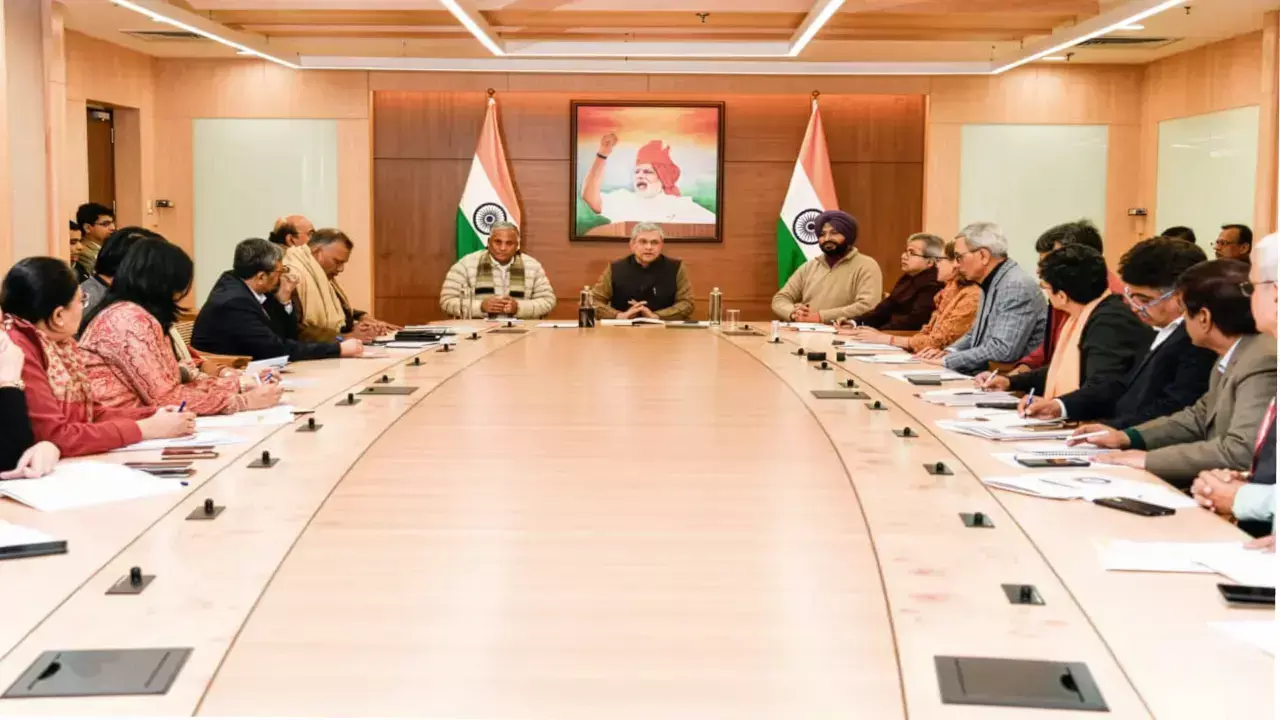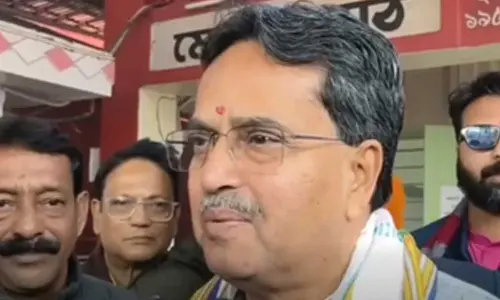Successful entry of political marketing in India

K S Chalam: Successful Entry of Political Marketing in India, Political Marketing as a sub-discipline of Political Management course in some Western universities became an academic success
 Political Marketing as a sub-discipline of Political Management course in some Western universities became an academic success after globalisation and the expansion of market democracy. It looks that the subject has not yet attracted the mainstream academic disciplines like Political Science, Political Economy and Public Policy in India. The recent amazing landslide of BJP particularly through its PM designee is a marker to be noted by every social scientist. Though there is a small study on political marketing of BJP in Delhi elections, it has not attracted the attention of many. The role of media, internet, technology, consultants etc are very important in understanding the concept of political marketing. Applying the subject of commercial marketing here, scholars Kotler and Levy, Mac Ginnis and others in the 1960s and 70s have published extensively. It is now a thriving business for consulting firms in the USA. It is noted that the services of famous political marketing consultants like James Carville who was strategist for Bill Clinton in 1992, Karl Rover for George W Bush in 2000, Philip Goulder for Tony Blair in the UK, Mark Penn for Hillary Clinton in 2007 were accessed to win elections mostly in the market democracies. ‘Business Today’ informed us that our PM designee NarendraBhaiModi has employed advertising firms like McCann World, Ogilvy& Mather etc to seize power in Delhi while the Congress party has relied on some bureaucrats who had degrees in Management, AAP had psephologists etc. The left averse to the idea of market is devastated. In other words, it is now a full scale service activity that can be hired by political parties.
Political Marketing as a sub-discipline of Political Management course in some Western universities became an academic success after globalisation and the expansion of market democracy. It looks that the subject has not yet attracted the mainstream academic disciplines like Political Science, Political Economy and Public Policy in India. The recent amazing landslide of BJP particularly through its PM designee is a marker to be noted by every social scientist. Though there is a small study on political marketing of BJP in Delhi elections, it has not attracted the attention of many. The role of media, internet, technology, consultants etc are very important in understanding the concept of political marketing. Applying the subject of commercial marketing here, scholars Kotler and Levy, Mac Ginnis and others in the 1960s and 70s have published extensively. It is now a thriving business for consulting firms in the USA. It is noted that the services of famous political marketing consultants like James Carville who was strategist for Bill Clinton in 1992, Karl Rover for George W Bush in 2000, Philip Goulder for Tony Blair in the UK, Mark Penn for Hillary Clinton in 2007 were accessed to win elections mostly in the market democracies. ‘Business Today’ informed us that our PM designee NarendraBhaiModi has employed advertising firms like McCann World, Ogilvy& Mather etc to seize power in Delhi while the Congress party has relied on some bureaucrats who had degrees in Management, AAP had psephologists etc. The left averse to the idea of market is devastated. In other words, it is now a full scale service activity that can be hired by political parties.
Market is understood as a place where buyers and sellers meet not necessarily in a physical setup to transact, is also possible through e-marketing. ‘Political marketing is about political organisations (such as political parties), adapting techniques (such as market research and product design) and concepts (such as the desire to satisfy voter demands), originally used in the business world to help them achieve their goals ( such as win in elections)’. Ever since Anthony Downs published his famous book on ‘Economic Theory of Democracy’ that stimulated Buchanan, Gordon Tullok, Stigler, Jagadish Bhagwati and others who attacked the institution of state and made it vulnerable, market has entered all human activities. India is credited as one of the developing countries to have followed the model of growth prescribed by funding agencies. Though some of our commentators acclaim our leaders and policymakers for this, it is not their ingenuity that facilitated the turnaround of the economy, but meekly following the model set by them. However, the country has almost reached the status of a western economy, but not entirely their culture. Now, it is anticipated that with the involvement of market in political game, we may also attain that status soon. At the same time, it is possible to make them imitate some of our institutions so that we can proudly say later that we are parallel in our structures and tastes. This is a win-win situation that pleases most of our leaders in Delhi, Hyderabad etc and their corporate clients.
Political marketing requires some basic things like the product, brand image, political consumer, communication, delivery etc. Among the above fundamentals, product design is very important. In order to get to the brass-tacks, the analysts are supposed to get the feel of market demands by talking to party members, focus group discussions, opinion polls, segmentation of voters/consumers, views of public etc to design the product. The product design and development based on market intelligence is crucial here. It is said that Reagan made his product on ‘peace and economy’, Bush ‘no tax rises’, Clinton ‘change and economy’ Obama ‘yes, we can’ etc. We have seen Narendrabhai using the language in several campaigns including the one in the L.B. stadium. After the product is designed like ‘development and change’, ‘Congress hatao’, etc branding is very vital. Branding is about how the political organisation or Individual is perceived overall. If the organisation is found to be redundant, it is better to rely on individual and focus all resources for making him/her the brand equity. Brands are essential in the electronic age to create a feeling of identity, help consumers/voters know about the party and its policies, and distinguish the brand from another brand of a competing party. Above all it is possible to examine the life cycle of the product and make changes when better products dominate the market. In the recent elections, NaMo is found to be a robust brand that captured the market compared to others. We have seen the media honchos using the above terms in their election coverage.
It is said that there are two categories of parties, the sales-oriented party (SOP) and the market- oriented party (MOP). The former relies on the method of persuasion to change the mind-set of voters while the latter, responds to the views and demands of the voters. However, both depend on the market strategies of communicating with the voter through brand image. The 4Ps of product (campaign platform), push marketing (grass roots efforts), pull marketing (mass media) and polling (research) are used to communicate with the voter by using all means of communication. We have seen the use of not only internet, electronic screens etc , but also massive live in programmes using TV channels, print media etc .The glamour of film stars as in the case of consumer products has been extensively used to improve the brand image of parties who may be co-opted later. The technique is, of course, very expensive involving expert teams from abroad. In a way, it is good that elections and political parties are slowly moving in to a regime that makes all this process standardised so that it can be monitored or regulated from any part of the world.
Branding of political leader and the product image of the party involve investment to be made to attract the young smart phone wielded, web surfed, TV addicts. But, what is missing in the whole exercise is that the message that the leader wanted to convey, the manifesto and the response of the voter seems to be lost for ever and may not be suitable for a country like India.
At home, we have seen TRS in Telangana using the traditional method of reaching out the voters to empathise with them through its manifesto, is a grand success. PM may be suitable in countries where party membership and voting are dwindling, traditional segmentation like class, family eroded, TV and internet are prime sources of information and where voters are critical about parties. Do the recent elections convey any clue of new age systems where we can outsource our Polls to an MNC?




